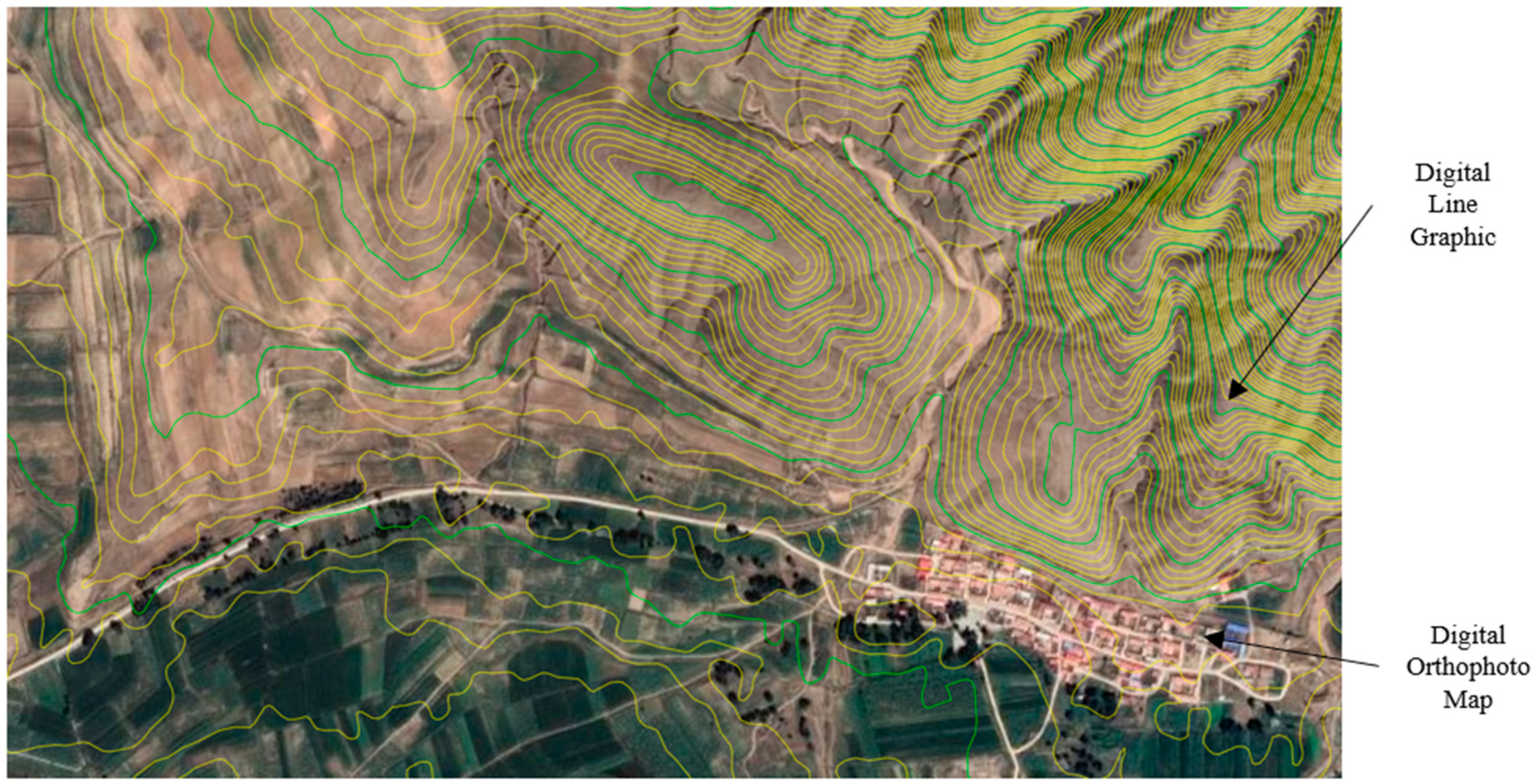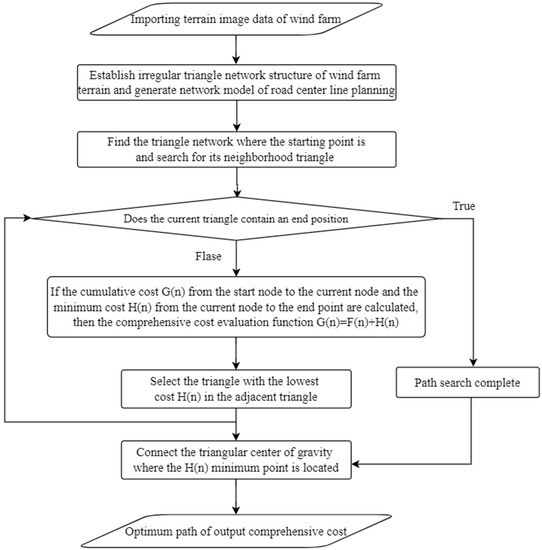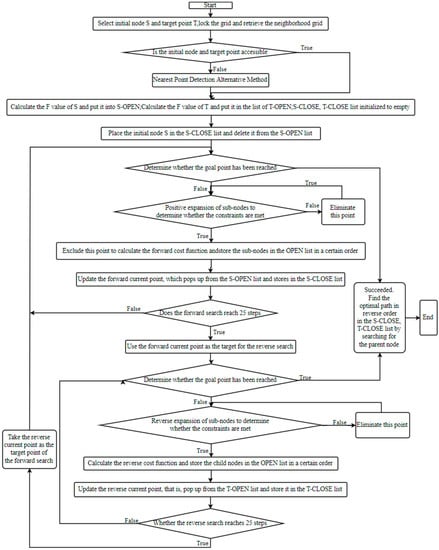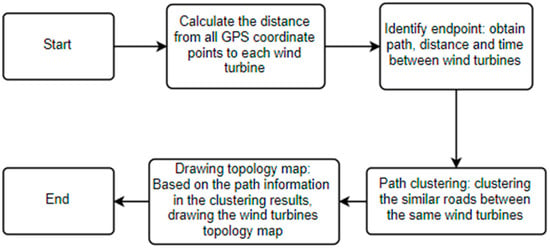Wind power plays an important role in the development of new energy era, and the road of wind farm is also the early preparation for the construction of wind power facilities. The complex terrain conditions of wind farm, large weight, long volume of wind turbine equipment, high economic requirement of road transportation, and lack of relevant standards and specifications lead to difficulty in road design and route selection of wind farm. In addition, frequent excavation and landfills during the construction of wind farm seriously destroy the original surface vegetation cover and soil structure, resulting in a large number of water and soil losses and ecological damage of wind farm.
- wind farm road
- circular curve
- vertical section
- water and soil loss
1.b Brief iIntroduction
With the increasing demand for energy conservation and emission reduction and the reduction of power generation costs from renewable energy sources, the global wind energy and other new energy power generation industries are developing rapidly. In terms of wind power, according to the data of the Global Wind Energy Association, the total installed capacity of wind power in the world was 837 GW by the end of 2021, with China ranking first with 338.31 GW. According to the data of the State Energy Administration, the accumulated installed capacity of wind power in China reached 5.2021 GW in 328, accounting for 13.8% of the total installed capacity of domestic power generation, next only to hydropower and thermal power. Wind power is a green energy source. Compared with other new energy generation technologies, wind power has the advantages of short construction period, mature technology, high reliability and low cost, and has a very broad development prospect.
2. Research on Line Selection Method Optimization
Traditional route selection is divided into paper route determination and field survey route selection. Indoor route selection is carried out on small-scale topographic map. According to collected data, several better schemes are determined after comparative analysis, and the best route is finally determined after field survey. The topographic map is restricted by such disadvantages as small scale and poor current situation, and the topographic features are quite different from the actual situation. To solve this problem, many scholars have improved and optimized the route selection method, which can be divided into three types: airborne surveying equipment auxiliary survey, professional software auxiliary design and road intelligent route selection model.
2.1.Auxiliary Survey of Aerial Surveying Equipment
2.1. Auxiliary Survey of Aerial Surveying Equipment
(UAV) aerial survey technology in a wind farm in Inner Mongolia and completed the
aerial survey work of the wind farm once by using the aerial survey technology. The effect diagram of the digital elevation model generated by this technology is shown in Figure 1.

Jie Zhang [2] proposed the generation of a digital wind farm corridor by unmanned aerial vehicle (UAV) on-board radar. By introducing the practical application of LiDAR technology in the Hunan Dama wind farm project, the feasibility of the application of LiDAR technology in the wind farm project is explained. The workflow is shown in Figure 2.
2.2. Professional software aided design
2.2. Professional Software-Aided Design

2.3. Intelligent Road Routing Model



3. Problems in Road Design of Wind Farms
3.1. Unclear Constraints of Intelligent Line Selection Models
3.2. The Variety of Design Vehicles Used in Circular Curve Design Index Research Is Relatively Single
3.3. The Incomplete Forecasting Model of Soil and Water Loss Intensity
References
- Liu, W.; Zhu, R. Application of UAV aerial photogrammetry technology in wind farm survey and design. Inn. Mong. Power Technol. 2013, 31, 75–79. (In Chinese)
- Zhang, J. Research on the Application of UAV LiDAR in Road Survey and Design of Wind Farm. Wind. Energy 2019, 03, 66–71.(In Chinese)
- El Masry, M.; Nassar, K.; Osman, H. Simulating the Effect of Access Road Route Selection on Wind Farm Construction.Comput. Civ. Eng. 2011.
- Ma, F.; Li, K.; Meng, X. Research on the Application of Satellite Images and Digital Topographic Maps in Wind Power Plants. Wind. Energy 2014, 03, 66–69. (In Chinese)
- Xiao, J.; Cong, O.; Hao, H.; Wang, H. Development and application of BIM technology in wind farm construction. Life Sci. J.2018, 02, 56–59. (In Chinese)
- Chen, K.; Wang, Y. Research on 3D Digital Design System of Wind Farm Based on GIS + BIM. Energy Technol. 2021, 19, 50–53.(In Chinese)
- Zeng, S.; Xie, X.; Zhang, Y.; Zeng, H.; Zhu, Q.; Cao, Z. Multi Dimensional Terrain Environment and Fan Parameter Constraint Wind Farm Road Optimal Design Method. Geogr. Inf. World 2018, 25, 54–59. (In Chinese)
- Zhou, T.; Zhu, Q.; Zeng, H.; Xie, X.; Ding, Y.L. Wind Farm Road Optimization Design Method Based on Multiple Linear Programming Model. Geogr. Inf. World 2019, 26, 61–65. (In Chinese)
- Wang, Y. Intelligent Route Selection Method of Wind Farm Road in the Mountain Based on Improved A* Algorithm. Master’s Thesis, Shijiazhuang Railway University, Shijiazhuang, China, 2021. (In Chinese)
- Kotb, M.; Elhelloty, A.; Shaaban, M. Selecting Optimal Access Roads for Mobile Crane in Wind Farm Project. Life Sci. J. 2019, 16,28–31.
- Wang, L.; Liu, J. Route Optimization of Wind Turbines Based On Vehicle Gps Data. In 2020 Global Reliability and Prognostics and Health Management (PHM-Shanghai); IEEE: New York, NY, USA, 2020
- Yang, K.; Du, H.; Wang, Q.; Liu, P. Research and Application of Optimal Road Design Algorithm for Wind Farm. Distrib. Energy 2022, 7, 56–62. (In Chinese)
- Yang, Y.; Chen, Z.; Wang, X.; Mao, G. Study of Highway Horizontal Curve Radius for Large Air Blower Transportation in Wind Farm. Highw. Eng. 2014, 39, 73–75. (In Chinese)
- Guo, Y.; Liu, Y.; Liu, H.; Xu, H.; Tang, W. Analysis on Turning Radius and Road Occupation of Mountain Transport Vehicles withFan Blades. Highw. Automob. Transp. 2013, 04, 11–14. (In Chinese)
- Yao, X. Research on Road Design of Wind Farm. Master’s Thesis, Zhejiang University, Hangzhou, China, 2013. (In Chinese).
- Chen, K.; Li, X. Road Route Design and Key Points Analysis of Wind Farm in Hilly Areas. Sol. Energy 2013, 24, 57–60. (In Chinese)
- Du, J.; Qi, J. Design of Widening the Turning Radius of Wind Farm Roads. Low Carbon World 2014, 23, 57–60. (In Chinese)
- Ji, M. Selection of road parameters and paths for wind farms. Wind. Energy 2016, 03, 52–54. (In Chinese)
- Zhao, Y. Study on Design Index of Circle Curve Radius and Pavement Width in Mountain Wind Farm. Highw. Eng. 2018, 43,124–128. (In Chinese)
- Ren, L.; Xu, N.; Chai, L. Application of AutoTURN in Road Design of Southwest Mountain Wind Farm. Hydropower Stn. Des.2019, 35, 23–25. (In Chinese)
- Wang, W.; Jiao, J.; Ma, L. Changes in erosion and sand production intensity in different erosion types of the Loess Plateau and their management objectives. Soil Water Conserv. Bull. 2012, 32, 1–7. (In Chinese)
- Wang, W.; Jiao, J. Temporal and Spatial Variation Features of Sediment Yield Intensity on Loess Plateau. Acta Geogr. Sin. 2002, 57,210–217. (In Chinese)
- Hang, Z.; Bo, B.; Chen, L. Soil and Water Loss Differentiation of Different Slopes, Land Use Types and Precipitation Changes in Loess Hilly Area. Sci. Soil Water Conserv. 2005, 3, 11–18. (In Chinese)
- Cyr, L.; Ferdinand, B.; Alain, P. Vegetation indices derived from remote sensing for an estimation of soil protection against water erosion. Ecol. Model. 1995, 79, 277–285.
- Jain, S.K.; Goel, M.K. Assessing the vulnerability to soil erosion of the Ukai Dam catchments using remote sensing and GIS.Int. Assoc. Sci. Hydrol. 2002, 47, 31–40.
- Zhong, H.; Wang, H. Analysis on Spatio-temporal Change Characteristics of Normalized Vegetation Index in Hubei Province from 2007 to 2016. J. Cent. China Norm. Univ. (Nat. Sci.) 2018, 52, 582–588. (In Chinese)
- Guo, J.; Hu, Y.; Xiong, Z. Spatio-temporal changes of NDVI during vegetation growth season in permafrost region of Northeast China and its response to climate change. Chin. J. Appl. Ecol. 2017, 28, 2413–2422. (In Chinese)
- Liu, X.; Yang, Q.; Tang, G. Extraction and Application of Relief of China Based on DEM and GIS Method. Bull. Soil Water Conserv. 2001, 21, 57–62. (In Chinese)


